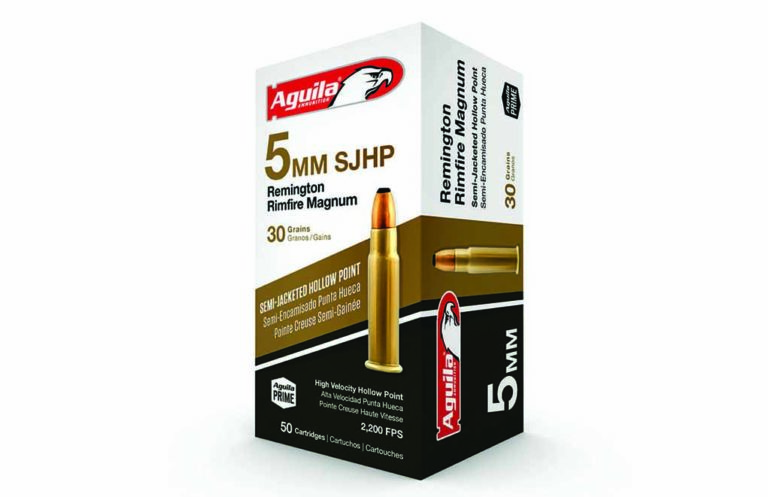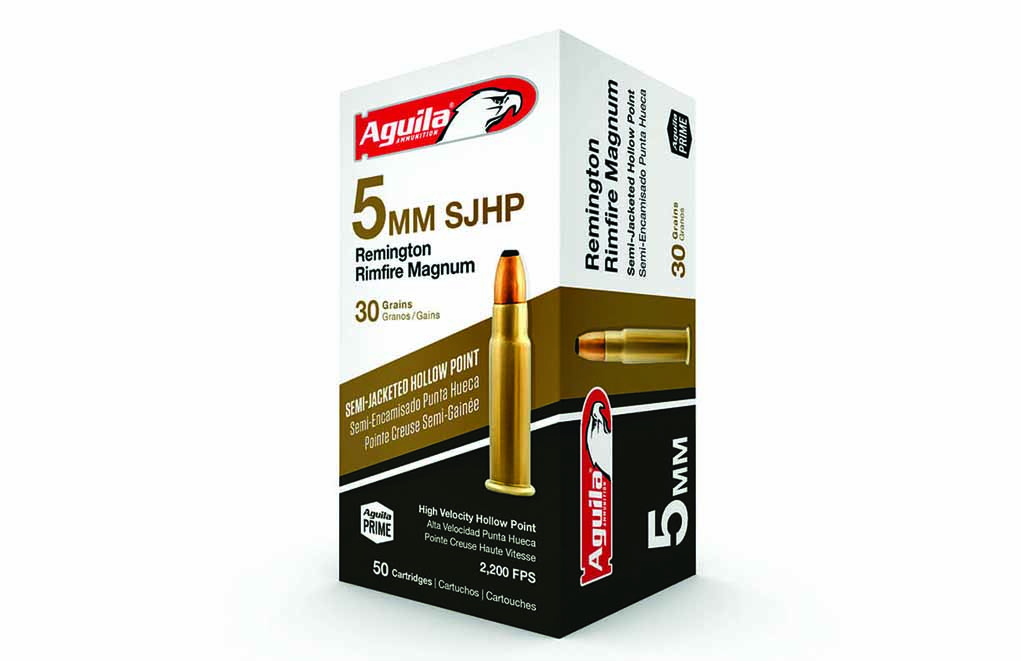

The 5mm Remington Rimfire Magnum is nearly gone, but certainly not forgotten.
Why People Still Love The 5mm Remington Rimfire Magnum:
- Capable of pushing a 38-grain bullet to 2,100 fps at the muzzle.
- At the time, early 1970s, this was the higest velocity of any rimfire.
- The 5mm had an effective killing range on small, varmint-type animals of 25 to 50 yards.
- While the 5mm Remington has the edge for varmint shooting, but the .22 WMR is more versatile for small game.
The 5mm Remington Rimfire Magnum (5mm RFM) was announced in 1969 but wasn’t actually introduced until 1970. Only the Remington bolt-action Model 591 clip-loading and Model 592 tubular magazine repeating rifles were available for the round. It was not adopted by other ammunition manufacturers.
For a while, Thompson/Center furnished barrels in 5mm Remington for the Contender pistol. At the time, this round used the only modern bottlenecked rimfire case. However, many of the obsolete black-powder rimfires were necked, so it wasn’t an entirely new development.
Bullet diameter is .2045 inch. It weighs 38 grains and has a muzzle velocity of 2,100 fps. This round developed the highest velocity of any rimfire at the time (newer, 30-grain .22 WMR loads offer greater muzzle velocity). Conversion kits have been offered every so often to make the 591 and 592 into centerfire guns.
On-Target Ammunition Information:
- The Blistering Hot 30 Nosler
- The .280 Ackley Improved
- If You Had To Pick Just One Cartridge, What Would It Be?
- Loading the .308 Winchester
General Comments
The 5mm Remington represented an interesting development—one that exceeds the performance of some of the early .22 centerfires. Its effective killing range on small, varmint-type animals is 25 to 50 yards more than the .22 Winchester Magnum Rimfire. This is due to the better sectional density of the smaller-diameter bullet, along with 150 fps higher initial velocity.
Both are varmint cartridges. In both, the hollow-point-type bullets ruin too much edible meat for small-game shooting. However, the .22 WMR is available with a non-expanding, full-jacketed bullet. Alternatively, the shooter could switch to the interchangeable .22 WRF for small-game hunting.
In summary, the 5mm Remington has the edge for varmint shooting, but the .22 WMR is more versatile for small game. On the other hand, a good, full-metal-jacketed small-game bullet for the 5mm Remington might have changed that analysis. The choice would be a matter of use and personal preference.
Remington has long since discontinued its Models 591 and 592, and no rifles are currently made in 5mm RFM. Likewise, ammunition is no longer made by Remington. The 5mm RFM is another good idea that didn’t catch on, although it had a lot to recommend it. (Ammunition is available on a limited basis from time to time.)
Editor's Note: This article is an excerpt from Cartridges of the World, 16th Edition.

Next Step: Get your FREE Printable Target Pack
Enhance your shooting precision with our 62 MOA Targets, perfect for rifles and handguns. Crafted in collaboration with Storm Tactical for accuracy and versatility.
Subscribe to the Gun Digest email newsletter and get your downloadable target pack sent straight to your inbox. Stay updated with the latest firearms info in the industry.

![Best Concealed Carry Guns In 2025 [Field Tested] Wilson Combat EDC X9S 1](https://gundigest.com/wp-content/uploads/Wilson-Combat-EDC-X9S-1-324x160.jpg)


![Best 9mm Carbine: Affordable PCCs [Tested] Ruger Carbine Shooting](https://gundigest.com/wp-content/uploads/Ruger-Carbine-Shooting-100x70.jpg)
![Best AR-15: Top Options Available Today [Field Tested] Harrington and Richardson PSA XM177E2 feature](https://gundigest.com/wp-content/uploads/Harrington-and-Richardson-PSA-XM177E2-feature-100x70.jpg)
